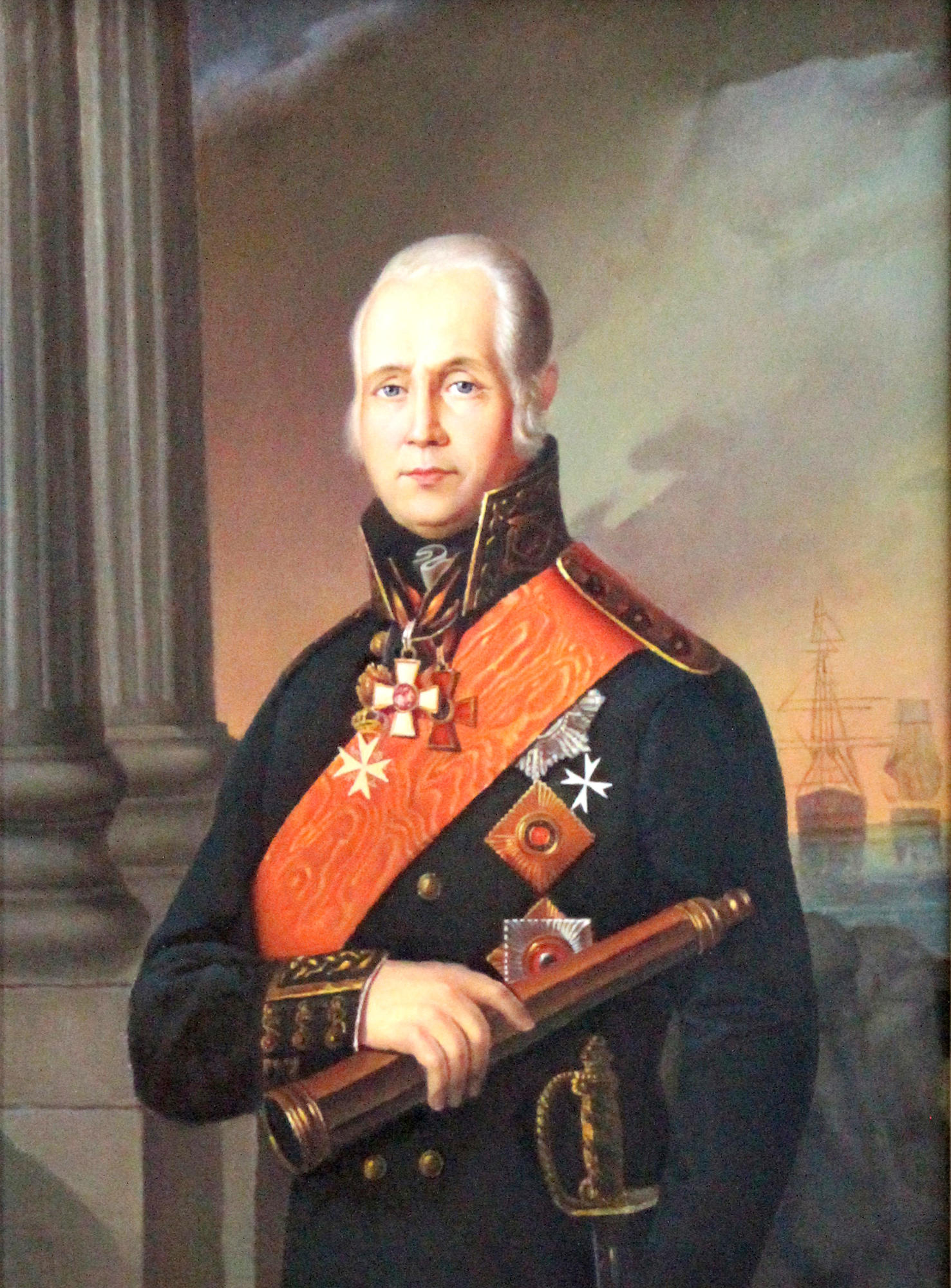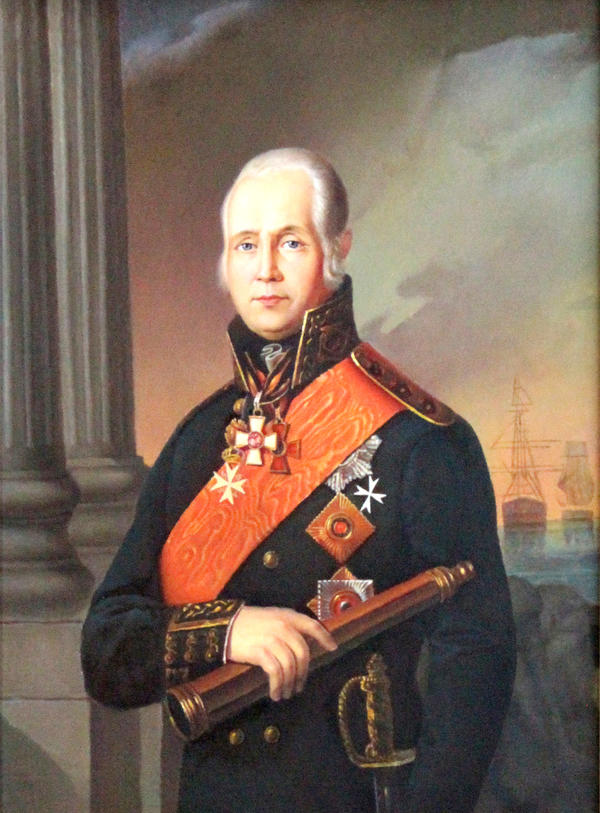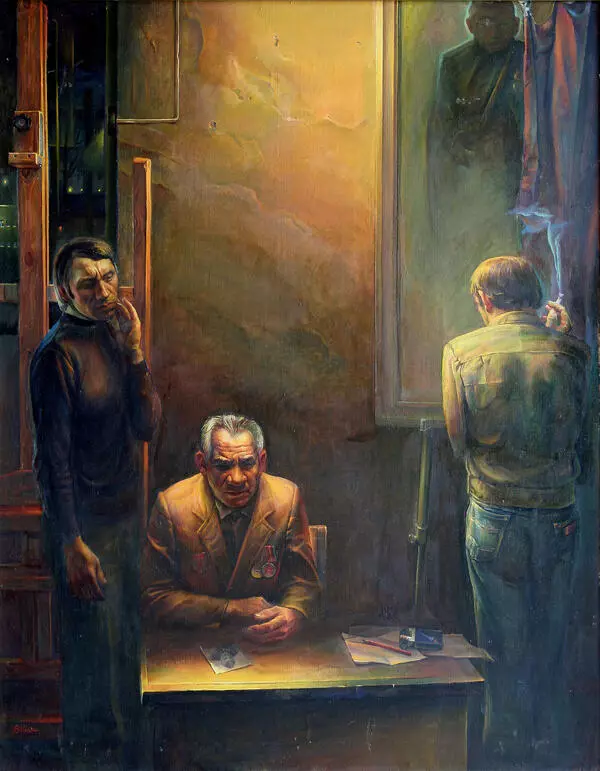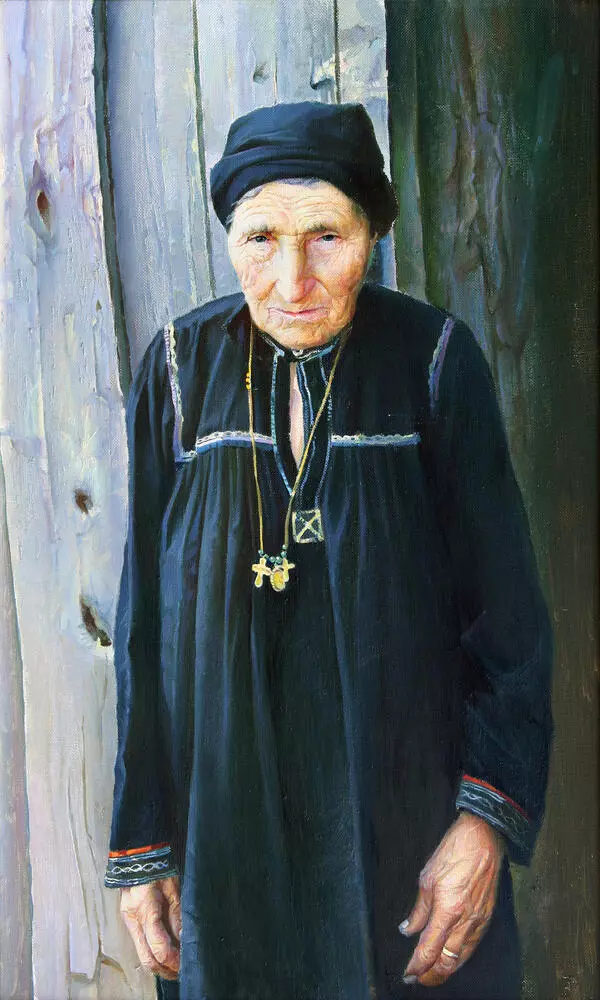Origin: Russia, the Republic of Mordovia, the city of Saransk, A.P. Shadrin, 2012. Obtained from the artist in 2012.
Admiral Fyodor Fyodorovich Ushakov, a Russian naval commander, is a legendary figure in the history of the Russian army. Having started the Russo-Turkish War as the captain of a ship in 1787, he finished it in the position of the commander of the Black Sea Fleet. During his military career Fyodor Ushakov he did not lose a single battle, never lost a ship, and none of this subordinates were captured. For that reason, Fyodor Ushakov was often called a Russian naval Suvorov.
The admiral spent his last years in Mordovia. Three years after his resignation occurred in 1807, Fyodor Ushakov settled in the village of Alexeevka in the Temnikov Region in the Tambov Gubernia. He lived there when the Patriotic War of 1812 started. Being already an elderly man, Fyodor Fyodorovich Ushakov did not participate personally in battles, however, being a patriot of his country, he contributed considerable funds to support the Russian army. Fyodor Ushakov died on October 2, 1817, and he was buried in the Sanaksar Abbey near the city of Temnikov.
Surprisingly enough but for a long time historians did not know exactly the appearance of the illustrious naval commander. It was believed that there were no trustworthy lifetime portraits of the admiral.
He could be seen only in Portrait of Admiral F.F. Ushakov painted by Pyotr Bazhanov in 1912, which was 95 years after the death of Fyodor Ushakov. Only in 2015 in an old Orthodox monastery located on the Greek Island Corfu a unique lifetime portrait of F.F. Ushakov painted by an unknown artist was discovered. At present historians consider that this portrait is the most trustworthy.
Alexander Pavlovich Shadrin, the author of the ceremonial portrait of the admiral presented in the collection of the State Hermitage Museum, could not use lifetime portraits of Fyodor Ushakov in his work. Nevertheless, comparing the admiral’s portrait discovered on Corfy and the painting by the unknown artist, many similar features can be found. This portrait was also painted during his lifetime but it could hardly represent the true appearance of the admiral.
The artist of the portrait presented in the State Hermitage Museum did not sign his work, however the canvas contains the exact date of creation, July 31, 1791, the year of the end of the Russo-Turkish War. F.F. Ushakov is painted against the colonnade of the Kazan Cathedral in St. Petersburg, though at that time the admiral was in Sevastopol and commanded the Black Sea Fleet. To paint the portrait, the artist must have used a description of F.F. Ushakov or other his images.
However even this date can be doubted as F.F. Ushakov was painted in a double-breasted uniform jacket which came into use only on May 18, 1801. Thus, in the 18th century such dark-green broadcloth uniform with a white stand-up collar, yellow metal buttons, and gold galloon and epaulets did not appear yet. F.F. Ushakov wore admiral epaulets though he became an admiral only in 1799.
The background of the portrait also deserves special attention as only Nevsky Prospect or the Catherine Canal can be seen from the Kazan Cathedral. The sea and ships remained off the harbor are invented and added by the artist to convey very tight relations between F.F. Ushakov and the fleet of Russia. The depiction of two ships behind the admiral lacks so many details that it is even impossible to determine the type of the ships. The artist of the portrait must have had very little knowledge on the fleet, including particular features of different types of military ships.
Historians believe that the portrait could be painted at the request of Alexander I for the collection of the State Hermitage Museum as it was impossible not to paint a portrait of such a prominent person of that time.
Admiral Fyodor Fyodorovich Ushakov, a Russian naval commander, is a legendary figure in the history of the Russian army. Having started the Russo-Turkish War as the captain of a ship in 1787, he finished it in the position of the commander of the Black Sea Fleet. During his military career Fyodor Ushakov he did not lose a single battle, never lost a ship, and none of this subordinates were captured. For that reason, Fyodor Ushakov was often called a Russian naval Suvorov.
The admiral spent his last years in Mordovia. Three years after his resignation occurred in 1807, Fyodor Ushakov settled in the village of Alexeevka in the Temnikov Region in the Tambov Gubernia. He lived there when the Patriotic War of 1812 started. Being already an elderly man, Fyodor Fyodorovich Ushakov did not participate personally in battles, however, being a patriot of his country, he contributed considerable funds to support the Russian army. Fyodor Ushakov died on October 2, 1817, and he was buried in the Sanaksar Abbey near the city of Temnikov.
Surprisingly enough but for a long time historians did not know exactly the appearance of the illustrious naval commander. It was believed that there were no trustworthy lifetime portraits of the admiral.
He could be seen only in Portrait of Admiral F.F. Ushakov painted by Pyotr Bazhanov in 1912, which was 95 years after the death of Fyodor Ushakov. Only in 2015 in an old Orthodox monastery located on the Greek Island Corfu a unique lifetime portrait of F.F. Ushakov painted by an unknown artist was discovered. At present historians consider that this portrait is the most trustworthy.
Alexander Pavlovich Shadrin, the author of the ceremonial portrait of the admiral presented in the collection of the State Hermitage Museum, could not use lifetime portraits of Fyodor Ushakov in his work. Nevertheless, comparing the admiral’s portrait discovered on Corfy and the painting by the unknown artist, many similar features can be found. This portrait was also painted during his lifetime but it could hardly represent the true appearance of the admiral.
The artist of the portrait presented in the State Hermitage Museum did not sign his work, however the canvas contains the exact date of creation, July 31, 1791, the year of the end of the Russo-Turkish War. F.F. Ushakov is painted against the colonnade of the Kazan Cathedral in St. Petersburg, though at that time the admiral was in Sevastopol and commanded the Black Sea Fleet. To paint the portrait, the artist must have used a description of F.F. Ushakov or other his images.
However even this date can be doubted as F.F. Ushakov was painted in a double-breasted uniform jacket which came into use only on May 18, 1801. Thus, in the 18th century such dark-green broadcloth uniform with a white stand-up collar, yellow metal buttons, and gold galloon and epaulets did not appear yet. F.F. Ushakov wore admiral epaulets though he became an admiral only in 1799.
The background of the portrait also deserves special attention as only Nevsky Prospect or the Catherine Canal can be seen from the Kazan Cathedral. The sea and ships remained off the harbor are invented and added by the artist to convey very tight relations between F.F. Ushakov and the fleet of Russia. The depiction of two ships behind the admiral lacks so many details that it is even impossible to determine the type of the ships. The artist of the portrait must have had very little knowledge on the fleet, including particular features of different types of military ships.
Historians believe that the portrait could be painted at the request of Alexander I for the collection of the State Hermitage Museum as it was impossible not to paint a portrait of such a prominent person of that time.






